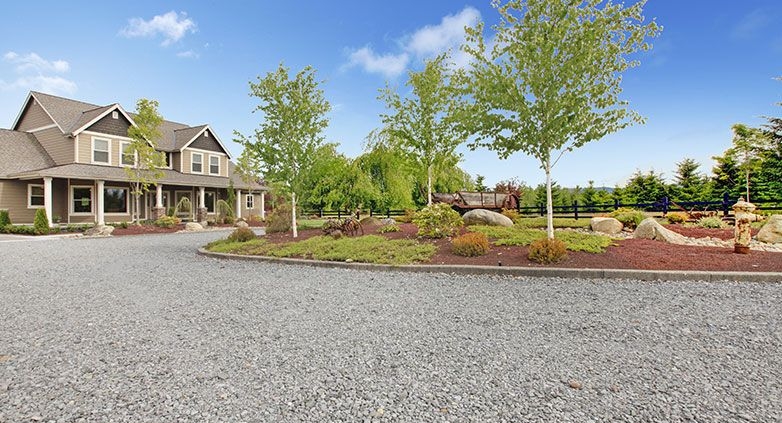Decomposed Granite Driveway – All the Pros and Cons
A decomposed granite driveway stands out as an economical and permeable option. This material is derived from weathered rocks that break down into smaller pieces. Its installation process is known for being straightforward, quick, and cost-effective, making it a popular choice for homeowners.
Decomposed granite (also known as DG) driveway has a natural, rustic appearance, and it is available in several colors, allowing for stylistic flexibility that fits your choice. It’s relatively easy to install and has a gritty texture for excellent traction underfoot. Compared to other materials, decomposed granite has a fine texture and is made up of aggregated granite that has the consistency of sand and is as large as 1/4″. It is highly porous and environmentally beneficial that stormwater can flow through, effectively preventing driveway flooding and reducing the need for additional drainage.
Understanding the full scope of a decomposed granite driveway is crucial for any hardscape project. This guide, curated by our experts, provides a comprehensive look into the nature of this material, its cost-effectiveness, and longevity.
What is Decomposed Granite
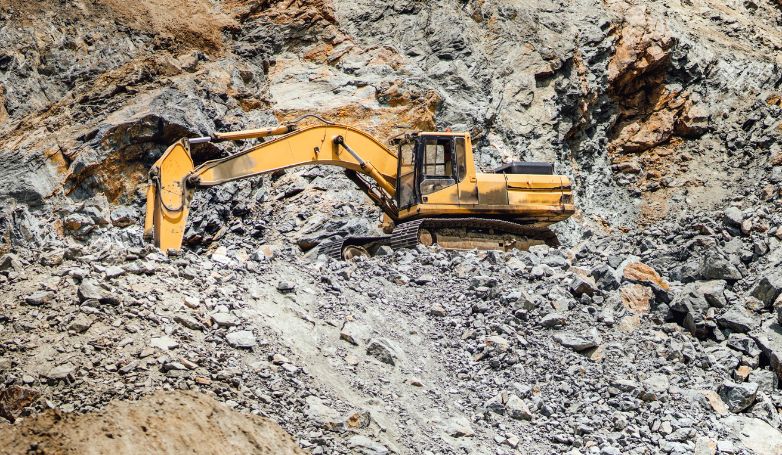
Amid the vast array of landscaping materials, decomposed granite stands out for its unique attributes and versatile applications, making it a subject worthy of in-depth exploration.
Composition
Composed of aggregate granite, this material is known for breaking down into finer particles. This unique characteristic lends itself to a range of outdoor applications. Its composition, distinct from other aggregates, offers versatility and practicality in various landscaping projects.
Longevity and Durability
One of the defining features of decomposed granite is its extended lifespan. Unlike some paving materials, it boasts a durability that ensures lasting performance in various weather conditions and usage scenarios.
Texture and Aesthetics
The fine texture of this material contributes significantly to its visual appeal, offering a natural and welcoming ambiance. Its softer and more refined composition sets it apart from other hardscaping materials, adding an element of elegance to any outdoor space.
Versatility in Landscaping
This material showcases its adaptability in landscaping applications, ranging from pathways to garden borders. Its capacity to conform to various forms and shapes makes it an ideal choice for innovative and creative outdoor designs.
Preventing Washout
To protect against unwanted runoff, installing plastic or steel edging around driveway drainage is a recommended strategy. This approach helps to keep the material in place, preventing erosion and preserving the surface’s integrity. Implementing such measures is crucial for maintaining the quality and appearance of your driveway.
Wrap Up
In conclusion, decomposed granite emerges as a multifaceted rock type with qualities that extend beyond the ordinary. Its composition, durability, texture, and adaptability make it a valuable asset in the realm of construction and landscaping, offering both aesthetic appeal and functional longevity.
Can Decomposed Granite Be Used For A Driveway?
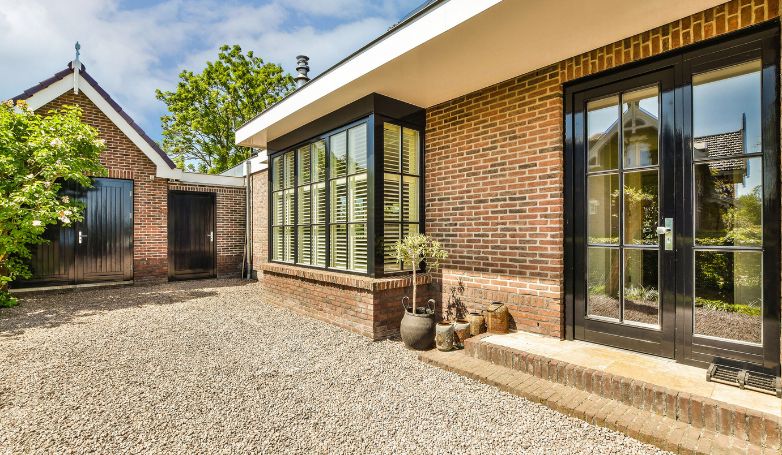
One of the principles of life includes the beauty that comes from ashes. The same applies to our driveways, walkways, and other outdoor areas. Decomposed granites can be used to pave these areas into a magnificent landscape. Also, it has proven to be less expensive and more natural than standard granite or other paving materials.
Decomposed granite driveway pros and cons
While some may question the durability and effectiveness of decomposed granite, its track record in paving applications speaks for itself. Considering the pros and cons of this material can guide you in deciding whether it’s the right fit for your driveway project.
Pros Of Decomposed Granite Driveways
As homeowners seek both functional and visually appealing solutions for their outdoor spaces, decomposed granite driveways come into focus as a versatile and sustainable choice. This exploration delves into the various advantages that make it a compelling option for crafting driveways that stand out in terms of aesthetics, affordability, and environmental consciousness.
Aesthetic Variety
Decomposed granite boasts a rich array of colors, including warm tan, sleek grey, and earthy brown, enabling homeowners to craft visually stunning driveways that harmonize with their landscape design, adding depth and character. This diverse color range not only enhances curb appeal but also provides an opportunity for creative expression in outdoor aesthetics.
Installation Cost is Low
Compared to other paving materials in the market, decomposed granite is affordable and has a low installation cost. After the initial purchase, installation, and stabilization, you can enjoy your driveway for a long time before you worry about turning it up.
Decomposed Granite Is Durable When Stabilized
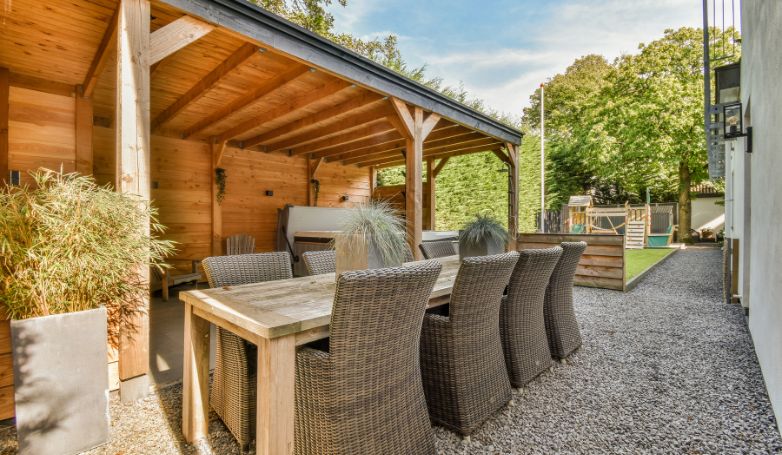
While untreated decomposed granite may succumb to impact compaction, stabilization transforms it into a resilient and enduring driveway surface. Implemented stabilization techniques fortify its structure, ensuring longevity and resistance to the wear and tear of daily usage, ultimately maximizing its lifecycle. This durability makes driveways of this material a sound investment with lasting benefits.
Decomposed Granite Encourages Drainage
The porous nature of decomposed granite is a boon for effective water drainage. A decomposed granite driveway not only minimizes concerns about water pooling but also contributes to a stable surface, making it an ideal choice for regions experiencing heavy rainfall or periodic storms. This drainage efficiency enhances the functionality of the driveway and prevents potential damage caused by water accumulation.
It is Eco-friendly and Sustainable
Beyond its visual allure, decomposed granite emerges as an environmentally conscious paving material. Comprising entirely natural components, it aligns with sustainable landscaping practices, minimizing the ecological footprint associated with driveway construction and contributing to a greener living environment. Choosing this material is not just a stylistic decision but also a step towards environmentally responsible outdoor design.
Decomposed Granite is Easy To Maintain
The simplicity of maintaining a decomposed granite driveway underscores its practical appeal. In cases of spreading or weathering in specific areas, homeowners can effortlessly address these concerns by re-compacting or replacing affected granite particles, ensuring that the driveway remains both visually pleasing and functionally intact over the long term. This ease of maintenance reduces the long-term cost of ownership and enhances the overall homeowner experience.
Cons Of Decomposed Granite Driveways
While driveways made of decomposed granite offer numerous advantages, it’s crucial to delve into potential drawbacks to make an informed decision about their suitability for your landscaping needs.
Unstabilized Granite has a Short Lifespan
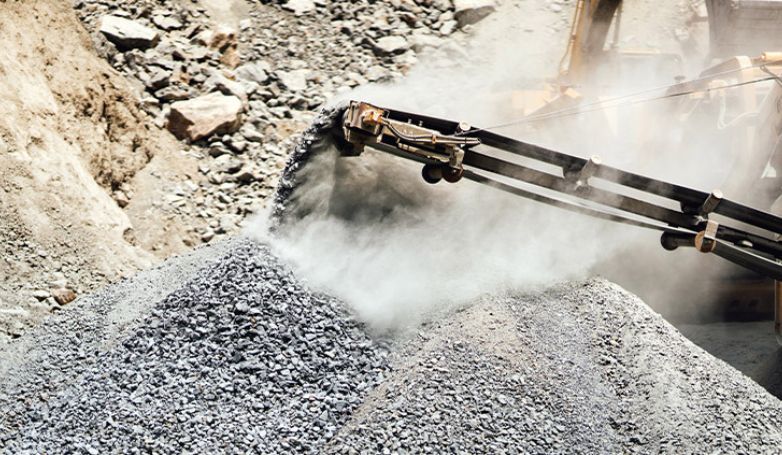
When installed without the use of stabilized pavers or resins, the vulnerability of decomposed granite to weathering and erosion increases. The absence of stabilizing elements exposes the driveway to the elements, leading to quicker degradation. This emphasizes the critical role that proper installation plays in ensuring the longevity of a driveway made of this material. Homeowners must prioritize stabilized materials to fortify the structure and safeguard against premature wear and tear.
Loosed Granites Spreads Out
Without proper stabilization, decomposed granite particles tend to spread out, compromising the uniformity and stability of the driveway surface. This spreading effect is accelerated by factors such as heavy rainfall or frequent use of the driveway. Homeowners should recognize the importance of adequate compaction during installation and the incorporation of stabilizing agents to prevent loose granites from migrating. This proactive approach is essential for maintaining the intended design and structural integrity of the driveway.
It Promotes Weed Growth
Inadequate stabilization of decomposed granite can impede water drainage, creating a persistently moist environment. This moisture, in turn, becomes a breeding ground for weeds and other plants. To address this concern, homeowners should prioritize proper stabilization during installation. This not only enhances water drainage but also creates an environment less conducive to weed growth. By investing in effective stabilization, homeowners can minimize the need for ongoing weed control efforts and preserve the driveway’s aesthetics.
Decomposed granite driveway cost
The typical price range for decomposed granite is between $40-$50 per cubic yard. No matter the size of your driveway, decomposed granite cost won’t be too much to bear. This paving material is not just affordable; it is incredibly soft, natural, and has a fine texture that makes it stand out amongst other paving materials.
| Price Range per Yard | $40 – $50 |
|---|---|
| Affordability | Very Affordable |
| Characteristics | Soft, Natural, Fine Texture |
| Versatility | Suitable for Driveways of Any Size |
| Standout Qualities | Softness, Affordability, Natural |
8 Step-By-Step Guide On How To Install Your Decomposed Granite Driveway
This guide offers in-depth insights for both DIY aficionados and those preferring professional installation. Each step is elaborated to ensure you create a functional and aesthetically pleasing driveway.
1. Site Preparation
The foundation of a successful decomposed granite driveway lies in meticulous site preparation. Begin by clearing the area of debris, roots, and large stones. It’s vital to create a slight slope, about 1-2% grade, away from buildings or the street for effective drainage. Compacting the soil is a must to avoid future settling. A well-prepared base prevents erosion and ensures the longevity of your driveway, especially in areas prone to heavy rainfall.
2. Defining the Construction Area
Accurate marking of the driveway’s boundaries is essential for both aesthetic appeal and construction efficiency. Use highly visible and durable markers like landscaping paint, stakes, or flags. This step is about precision and visualizing the final layout. Take time to measure twice, ensuring symmetry and alignment with your property’s overall design. Consider the driveway’s width and curves, as these will influence the final appearance and functionality.
3. Excavating the Area
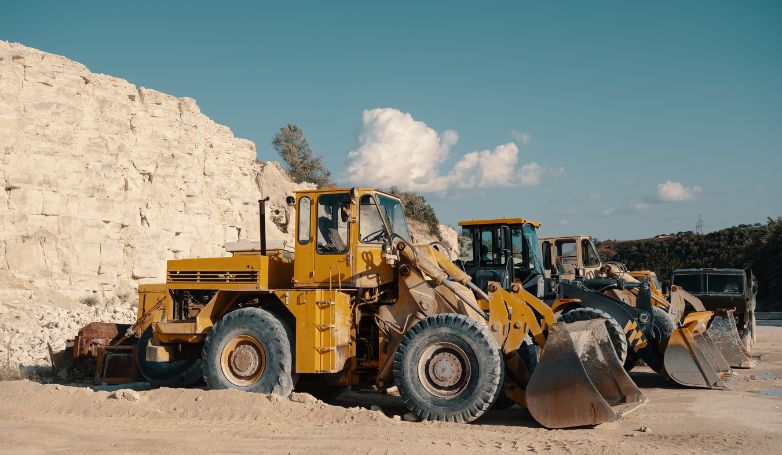
Depth plays a crucial role in the stability of your decomposed granite driveway. For standard driveways, a depth of 4 inches is typically sufficient. However, in areas of high traffic or softer soil, consider excavating 6 inches or more. This increased depth provides additional stability and support, preventing the granite from shifting under the weight of vehicles. Remember to keep the excavation consistent throughout the area to ensure an even distribution of granite later.
4. Leveling the Excavated Area
Once the area is excavated, it’s crucial to level it meticulously. Use a rake and a spirit level to ensure an even surface. For enhanced stability, consider renting a plate compactor to compact the soil firmly. This step is vital to prevent shifting or sinking of the decomposed granite later. An evenly compacted and leveled base is the key to a smooth, durable driveway.
5. Installing Landscape Fabric
Landscape fabric acts as a barrier to weed growth and stabilizes the granite. Lay the fabric over the leveled soil, ensuring it covers the entire area without gaps. Secure the edges with landscape staples. Over the fabric, add a layer of sand, about 1 inch deep, to aid in drainage and provide a smooth base for the granite. This layer also helps to level out minor imperfections in the soil surface.
6. Adding Plastic Edging
Plastic edging is critical in containing decomposed granite and maintaining the shape of your driveway. Install edging along the marked boundaries, ensuring it’s firmly anchored into the ground. This edging not only keeps the granite in place but also adds to the overall aesthetics by providing a clean, defined border. For driveways near drainage areas, the edging plays a crucial role in preventing the washout of granite during heavy rains.
7. Applying Stabilized Granite
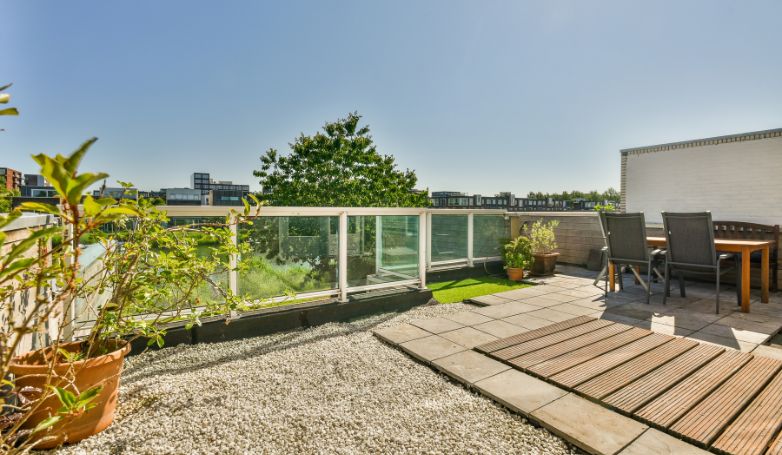
Determining the right amount of granite is essential. Use a formula based on the length, width, and depth of the excavated area to calculate the needed volume. When spreading the granite, aim for a consistent thickness of about 1.5 inches across the area. Stabilized granite, pre-treated with a binding agent, ensures better cohesion. Distribute it evenly with a shovel or wheelbarrow, and use a rake for a smooth finish. This thickness is optimal for bearing the weight of vehicles while maintaining the driveway’s aesthetic appeal.
8. Watering the Granite
The final step is watering the driveway thoroughly. This process helps the granite particles to bond, creating a more stable surface. Use a garden hose to evenly wet the surface, ensuring all areas are saturated. Initially, the driveway might appear muddy, but this is part of the settling process. Allow it to dry completely, which might take a day or two depending on weather conditions, before using the driveway. This drying period is critical for the granite to set and harden, forming a durable, cohesive surface.
Conclusion
Installing a driveway made of decomposed granite requires attention to detail and proper execution of each step. By following this comprehensive guide, you can ensure your driveway is not only visually appealing but also built to last. This material offers a unique combination of natural beauty and durability, making it an excellent choice for a long-lasting, attractive driveway.
Frequent Questions About Decomposed Granite Driveway
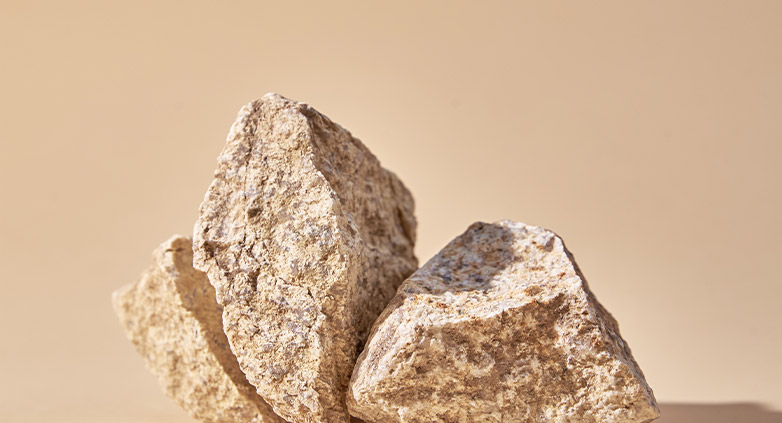
Within the domain of driveways made of decomposed granite, frequent inquiries commonly center on their drainage capacities, vulnerability to erosion, and successful strategies for upholding stability. Delving into these questions yields valuable insights into the practical considerations of employing this material as a driveway surface.
Does water drain through decomposed granite?
DG provides excellent drainage for water. It allows water to permeate and be absorbed, eliminating concerns about gathering puddles. This quality makes it an effective choice for water drainage in outdoor spaces.
Will decomposed granite wash away?
Install plastic edging on both sides of the driveway. Plastic edging helps secure your driveway and prevent decomposed granite from washing away. Also, ensure that plastic edging or steel is installed around any driveway drainage. Taking this action will prevent your DG from flowing into the drainage system and being washed off your driveway.
How do you keep decomposed granite in place?
You can pretreat granite or install it with stabilized pavers or resins. A stabilized paver will keep your granite in place and prevent it from spreading and eventually washing away. You can use a Gator stone bond, a simple one-coat application to keep your DG in place.
What is the difference between crushed granite and decomposed granite?
Crushed and decomposed granite are made from the same component. However, crushed granite has sharp edges and shapes, making it more expensive in the market than DG. At the same time, DG is more economical, eco-friendly, and valuable than crushed granite.
Conclusion
Your driveway needs to be clean and aesthetically pleasing, which you can get with properly installed decomposed granite. It is perfect for your driveway if you want something natural and eco-friendly. It is also less expensive and low-maintenance compared to other paving materials.

